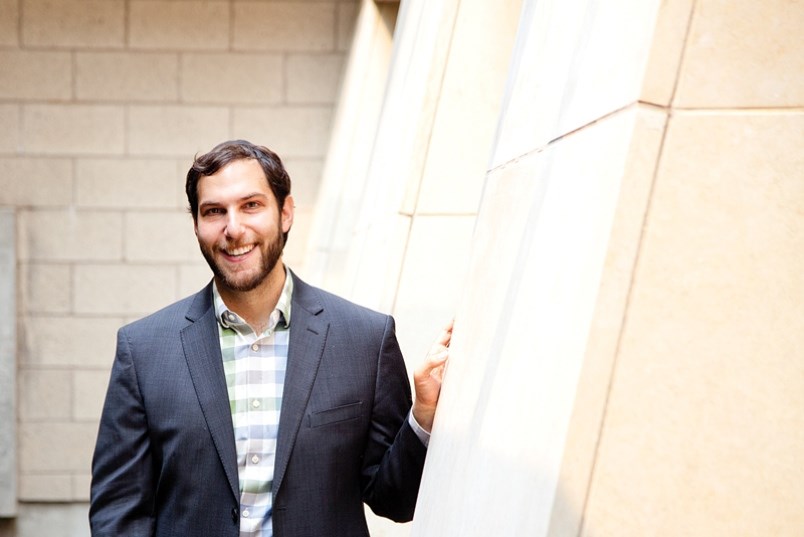The church tucked in the cedars on Mathers Avenue was empty last Sunday, but – judging from YouTube views – services were packed.
In a bid to host their congregation in the social distancing era, the North Shore Unitarian Church has begun posting services online. Likewise, St. Stephen’s Anglican Church offers a livestream of services while the Lynn Valley United Church is following online services with coffee chat via Zoom video conferencing. Congregation Har El on Taylor Way in West Vancouver is broadcasting a Friday night service through Facebook Live and holding a Zoom event to mark the end of the Sabbath.
The adjustment has been a challenge, acknowledges North Shore Unitarian Church Rev. Ron Phares.
“Preaching to the camera is terrible,” he says. “There’s no audience to read, there’s no body language to see, there’s no faces nodding and giving you encouragement.”
Phares says he’s been watching Russell Brand videos for tips on preaching to the green light.
When it comes to posting church songs, ministers also have to be wary of: “little bots that crawl the web and find improper use and threaten legal action unless compensated,” Phares says. Some of those bots are legitimate and some are not, he adds.
“You have to be careful with copyright,” he advises before taking a moment to reflect. “That’s not something that I’ve spent a whole lot of my life thinking about.”
For centuries, church has meant sermons, celebrations, occasions to listen and share and hopefully experience a sense of community, Phares says. But at the moment, that time-tested model isn’t applicable.
“Most ministers in most churches right now are having to reinvent,” he says. Taking the physical aspect out of church marks a fundamental change, he says.
“Ritual is powerful by yourself but it’s magnified and amplified when you are doing it together; so that is lost.”
In a bid to adjust to the times, the church now has a production crew. However, Phares clarifies, he’s not likening his services to the megachurches that feature light shows and swooping crane cameras.
“That is not where most of us are,” he emphasizes. “The fact that I say, ‘We have a production crew,’ is hysterical.”
The church initially tried broadcasting live services but ran into logistical challenges.
“We couldn’t even be in the same room together and put on a service in a way that really respected our health,” he says.
Beginning March 29, they rolled out a recorded service featuring songs, a sermon and an emcee. Each performer recorded themselves and sent their video to a production team that edited the footage together.
Watching himself is “a little trippy,” Phares says.
Still, it’s the only responsible way to conduct services, he says.
“If people are in a church that is still meeting, they might want to tell their pastor to knock that shit off because it’s dangerous,” he says.
Following services, they’ve incorporated the Slido polling app to allow congregants to ask questions and comment.
“If someone said: ‘I had no idea what you were talking about when you told the story about the bull.’ Let’s say a lot of people didn’t. They could all like that question and it goes to the top of the list,” Phares says.
While most congregants are on-board, there are a few who aren’t online at all, Phares says.
“We have thought about having some online tutorials for people but the trick there is the only way you can do that tutorial is online.”
The church is committed to reaching out to those folks in other ways, Phares says.
The issue of online services is somewhat thorny at Congregation Har El, explains Rabbi Philip Gibbs, noting the rules around the Jewish day of rest.
“One of the most notable [rules] has come to be avoiding the use of electronics,” he says.
That rule emphasized and elevated the in-person experience, Gibbs says.
“I’m not necessarily comfortable using electronics or personally setting up a livestream on Shabbat,” he says. “At least for me it’s still been important to have a day where I do turn off my phone, where I’m not just clicking news article after news article.”
However, hosting services on Facebook Live and Zoom allows connection “even as we do have to be physically distant,” he says.
Gibbs is also aware of the need to balance his religious beliefs with the needs of the congregation, some of whom aren’t personally observant, he says.
While it’s almost impossible to speak about anything that doesn’t refer to the pandemic, Gibbs says there’s also a value of continuity amid the crisis.
“Having the sense of familiarity, having the sense of prayers, is able to give people a touchpoint of normalcy.”
As someone who lives alone, Gibbs says he misses human interaction.
“I really have been missing the ability to just sit in a coffee shop that has other people in it,” he says.
For Phares, that’s also been the key question.
“We’re trying to figure out ways to hold each other when we can’t hold each other.”



